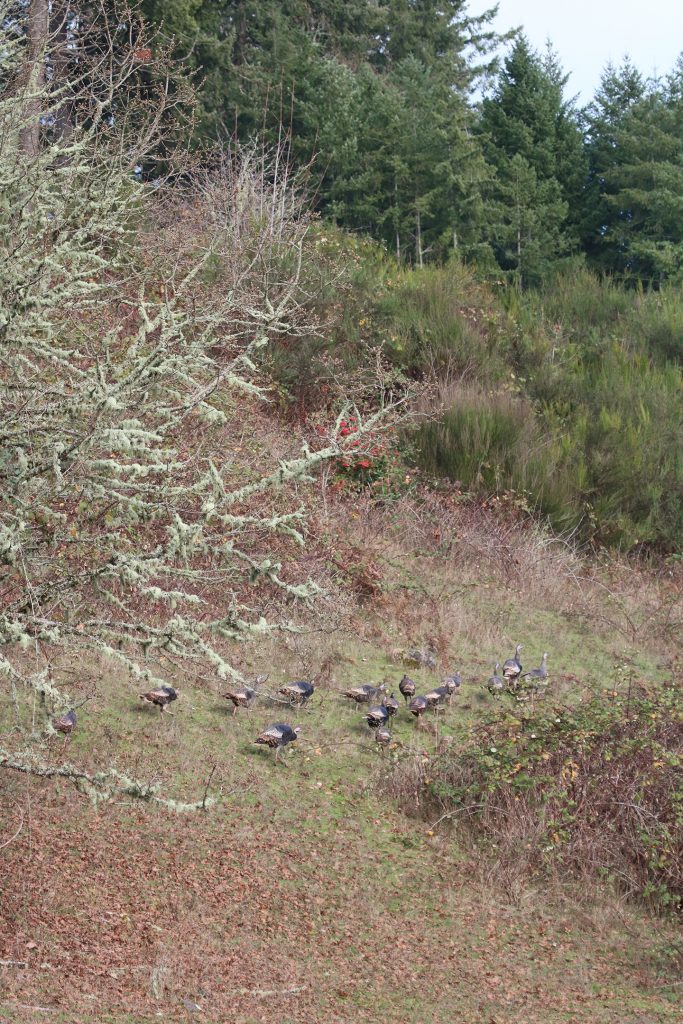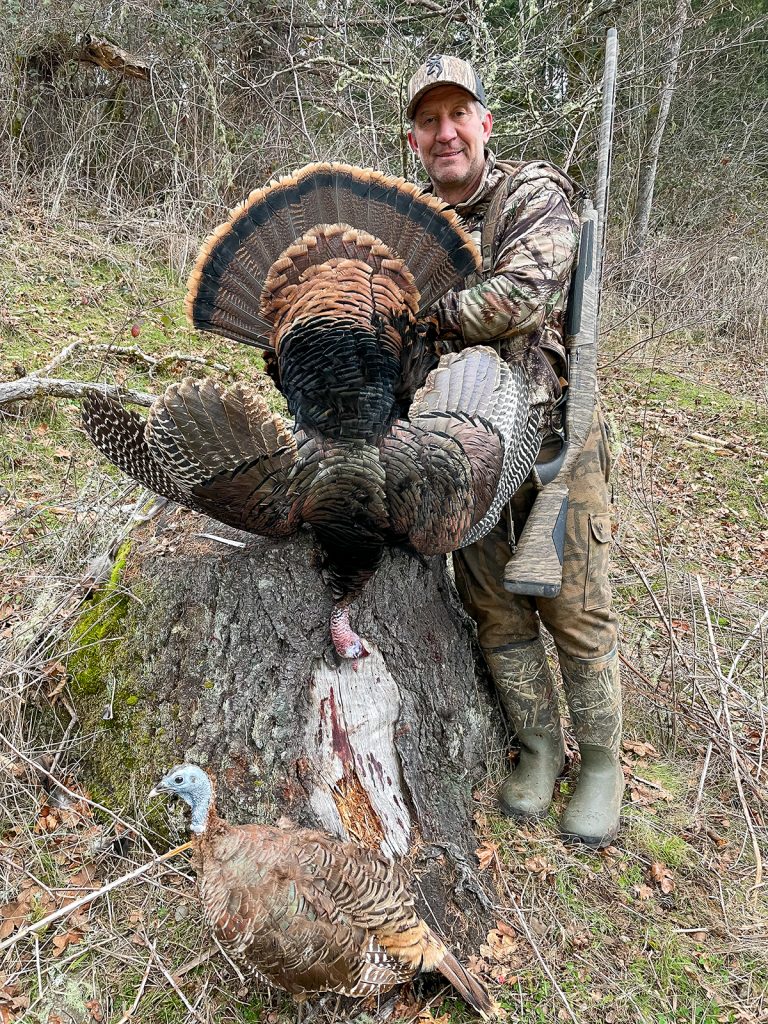Patterning Fall Turkeys
As fall progresses, a turkey’s food sources change. A shift in diet can result in flocks of turkeys moving to a different area or expanding their previous daily route.
When food is regularly available, turkeys establish a travel routine they use over and over for days, even weeks, sometimes months. Watching turkeys in the fall is a good way to learn where they go and when. If a large flock of fall turkeys are spooked from a food source, they may discover food elsewhere and not return to where you originally saw them for a long time, so use stealth when scouting.
Binoculars, a spotting scope,or even trail cameras are excellent for fall turkey scouting. Being able to watch turkeys from a safe distance is the best way to learn where they move and how they’re moving.
Early in the fall, when it’s still warm and grasshoppers are flourishing, flocks of turkeys may spend all day feeding in one field or meadow. As temperatures cool and insect numbers decline, grass seeds and fruits become part of a turkey’s daily diet. When this transition happens, turkeys cover more ground to take advantage of the variety of food scattered about.

As large turkey flocks move in search of food, competition can be stiff. You’ll often observe flocks of turkeys running from one food source to another, regularly fighting over food. Pay attention to what time of the day turkeys arrive at specific food sources as this can help you develop an efficient hunting plan.
If you don’t have the luxury of scouting for long hours, setting up a trail camera at known food sources and along established travel routes is wise. Trail cameras show precisely when birds arrive, how long they stick around, how often they return during the course of the day and how many birds are using an area.
Silk worms, caterpillars, spiders and more make up a turkey’s fall diet. As fall leads to winter, earthworms, a variety of dried grass and weed seeds dominate a turkey’s diet. They will also focus on rose hips and fruit trees as primary food sources. Wild apple, plum, and pear trees are all favorite fruits of turkeys in the fall and winter. If you want a good laugh, watch a turkey nab a whole apple and get chased by the rest of the flock.
When you harvest a turkey in the fall, examine its crop to see what it contains. This will leave no question as to what turkeys are eating in your area and thus illustrating where future hunting efforts should be focused. It’s not unusual to find over 200 items in a single turkey crop, from grasshoppers to rose hips, seeds and more.

The more time you spend observing and patterning the movements of fall turkey flocks, the more you’ll learn about their behavior and routines. This, in turn, will help you develop a sound approach to hunting them.
CONNECT WITH US
National Wild Turkey Federation
770 Augusta Road, Edgefield, SC 29824
(800) 843-6983
National Wild Turkey Federation. All rights reserved.
